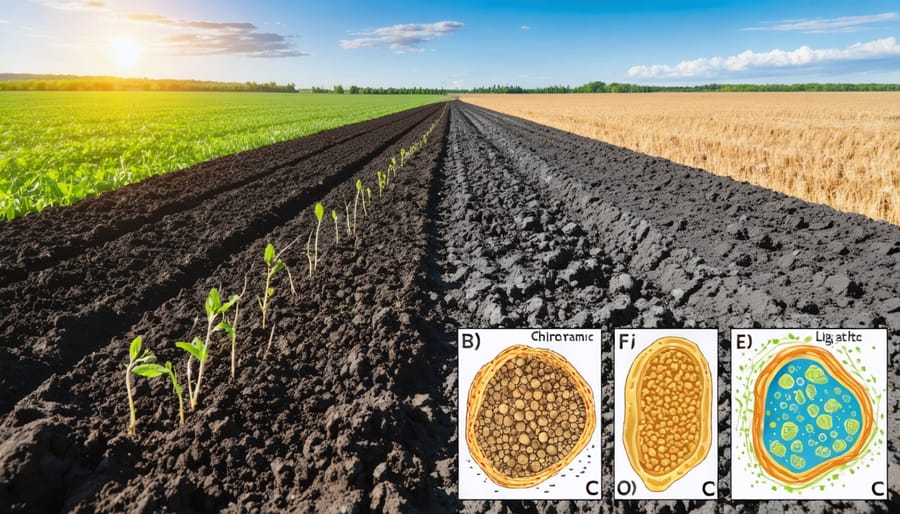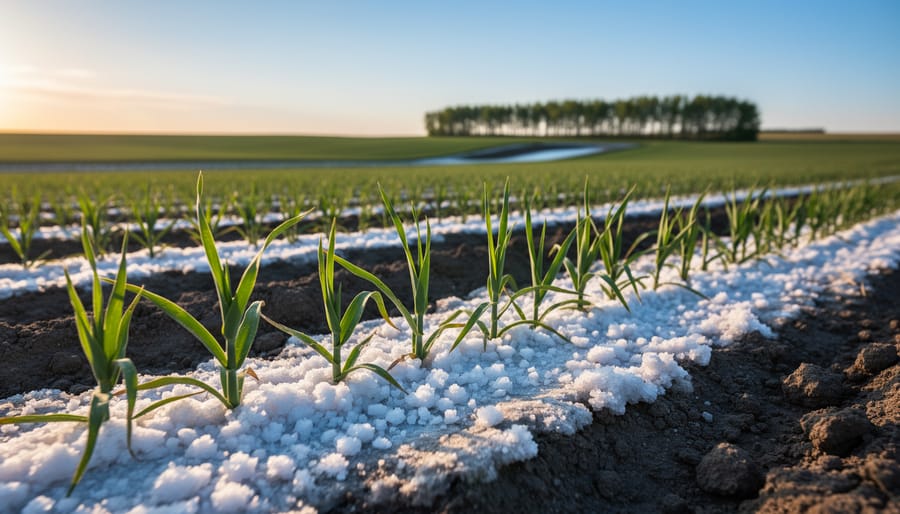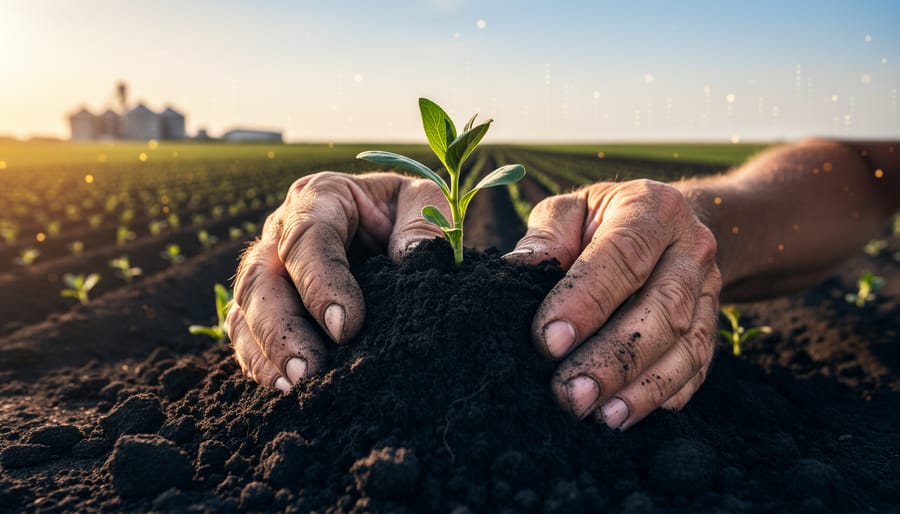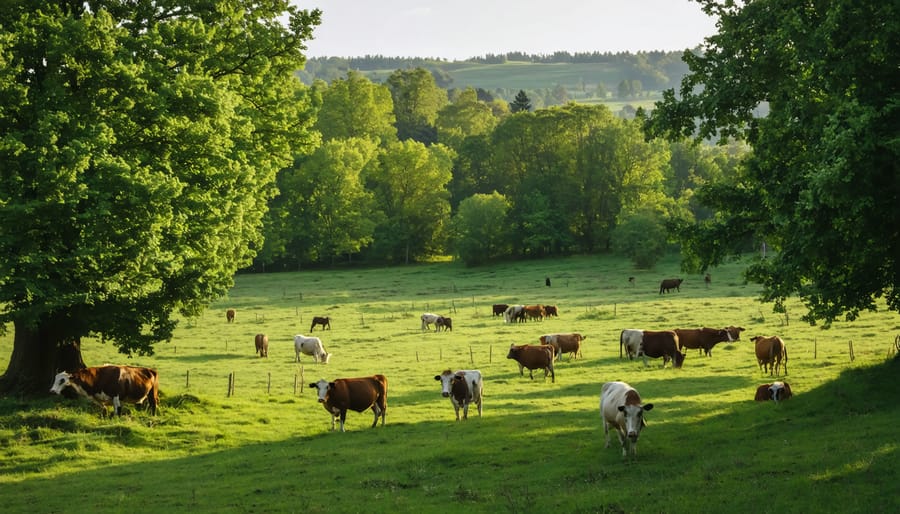As carbon dioxide levels continue to rise globally, Alberta’s farmland holds a powerful yet often overlooked solution. Our province’s 50 million acres of agricultural soil naturally captures and stores atmospheric carbon dioxide through a process called soil carbon sequestration, acting as one of nature’s most efficient carbon sinks. Recent studies by Agriculture and Agri-Food Canada show that healthy soil can sequester up to 2 tonnes of carbon per hectare annually – equivalent to taking one car off the road each year. For Alberta farmers, understanding this natural process isn’t just about environmental stewardship; it’s about building resilient, productive farmland that benefits both the environment and their bottom line. From the rich black soils of the parkland region to the brown soils of the prairie, each acre represents an opportunity to combat climate change while improving soil health, water retention, and crop yields. This practical guide explores how our soil absorbs carbon dioxide and, more importantly, how Alberta farmers can enhance this natural process through proven management practices that work in our unique climate.
The Science Behind Soil’s Carbon-Capturing Power
Understanding Carbon Sequestration in Alberta Soils
Alberta’s diverse soil types play a crucial role in carbon sequestration in agricultural soils. Our province’s Black Chernozemic soils, particularly common in central Alberta, have naturally high organic matter content and can store up to 100 tonnes of carbon per hectare in the top 30 centimetres.
The Dark Brown and Brown Chernozemic soils found in southern Alberta, while containing less organic matter, still demonstrate significant potential for carbon storage when managed properly. Research conducted at the Lethbridge Research Centre shows these soils can increase their carbon storage by 10-15% through improved farming practices.
Northern Alberta’s Gray Luvisolic soils present unique opportunities for carbon sequestration. Though traditionally considered less fertile, these soils have shown remarkable capacity for carbon storage when converted from conventional tillage to no-till systems, with potential increases of 5-8 tonnes of carbon per hectare over five years.
Local success stories demonstrate this potential. For instance, farms in the Peace River region have documented increased soil carbon levels by 2-3% over a decade through the implementation of cover cropping and reduced tillage practices, proving that Alberta’s varied soil types can effectively contribute to climate change mitigation.
The Vital Role of Soil Microorganisms
In Alberta’s rich agricultural soils, billions of microscopic helpers work tirelessly to store carbon dioxide. These soil microorganisms – primarily bacteria and fungi – form the backbone of carbon sequestration in our farmland. Think of them as nature’s carbon storage experts, transforming plant material and atmospheric CO2 into stable soil organic matter.
Fungi, especially mycorrhizal networks, create vast underground systems that connect plants and transfer carbon compounds throughout the soil. These fungal networks can extend for kilometres beneath a single field, helping to move and store carbon deep within the soil where it’s more likely to remain stable.
Bacteria play an equally crucial role by breaking down organic matter and converting it into forms that stay locked in the soil. Local studies in Alberta have shown that healthy bacterial populations can help soil store up to 30% more carbon compared to depleted soils.
When we maintain healthy soil conditions – proper moisture levels, minimal tillage, and diverse crop rotations – these microorganisms thrive. Many Alberta farmers have noticed that fields with active microbial communities not only store more carbon but also show improved crop yields and better drought resistance.
Remember, every handful of healthy soil contains more microorganisms than there are people on Earth, all working to help us fight climate change while improving our farm productivity.

Current Carbon Storage Status in Alberta Farmland
Success Stories from Local Farms
In central Alberta, the Johnson Family Farm has become a shining example of successful soil carbon management. Over five years, they’ve increased their soil organic carbon by 2% through implementing no-till practices and diverse crop rotations. “We’ve noticed a significant improvement in soil structure and water retention,” says Sarah Johnson, who manages the 2,000-hectare operation.
Near Lethbridge, Peter Martinez’s mixed farming operation has demonstrated remarkable results. By integrating cover crops and rotational grazing, his soil tests show a 1.5% increase in carbon content over three years. The changes have led to better drought resilience and reduced fertilizer needs.
The Prairie Rose Cattle Company, east of Edmonton, combines traditional ranching with innovative carbon storage techniques. Their management-intensive grazing system has helped sequester an estimated 2.5 tonnes of carbon per hectare annually. “Our pastures are more productive than ever,” notes owner Mike Thompson, “and we’re seeing native species return to our grasslands.”
These success stories showcase how Alberta farmers are leading the way in soil carbon sequestration while maintaining profitable operations.
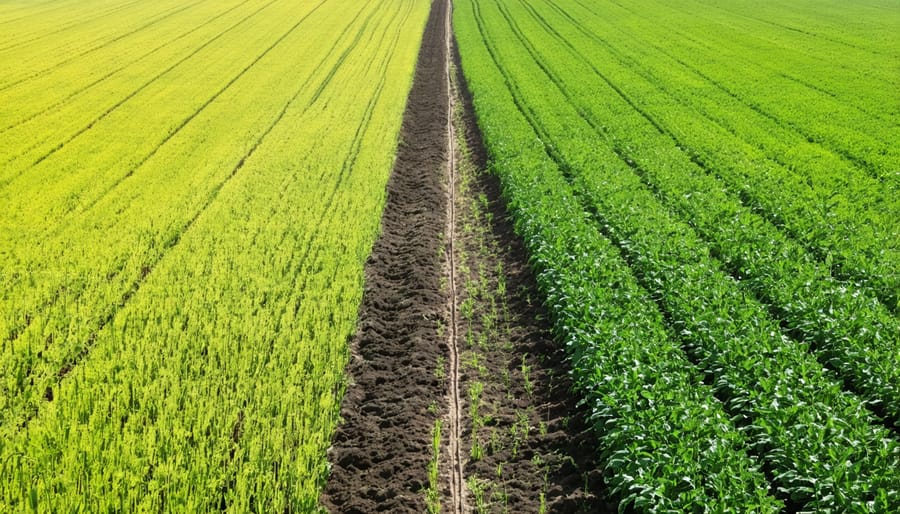
Measuring Your Soil’s Carbon Content
Measuring your soil’s carbon content is simpler than you might think. While professional lab testing provides the most accurate results, there are several practical methods you can use right on your farm. The most common approach in Alberta is collecting soil samples from different areas of your field, about 30 centimetres deep, and sending them to a certified soil testing laboratory.
For regular monitoring, many Alberta farmers use the visual assessment method. Look for dark, rich soil with good structure – the darker the soil, typically the higher its organic carbon content. The “soil ribbon test” can also give you a rough estimate; soil with higher organic matter tends to form longer, more stable ribbons when rolled between your fingers.
Consider investing in a basic soil carbon testing kit, available through many agricultural supply stores. While not as precise as lab testing, these kits can help you track changes over time. Many local agricultural extension offices recommend testing your soil at least once every three years, preferably in the same season for consistent results.
Remember to keep detailed records of your measurements, including GPS coordinates of testing locations, to track changes effectively over time.
Practical Steps to Boost Your Soil’s Carbon Storage
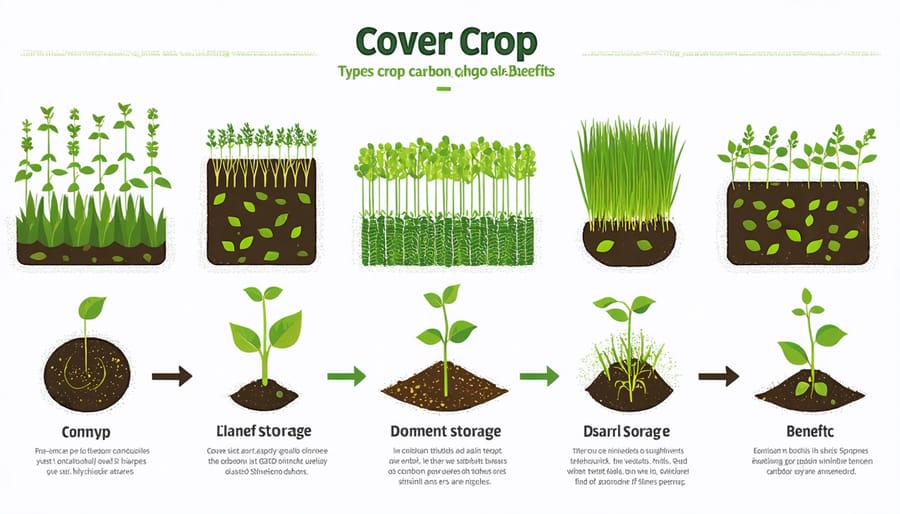
Cover Cropping Strategies
In Alberta’s unique climate, selecting the right cover crops plays a crucial role in enhancing soil carbon sequestration. Cold-hardy species like fall rye and winter wheat are excellent choices for our region, as they establish quickly and provide soil coverage through harsh winters.
Legumes such as field peas and faba beans work exceptionally well in our growing conditions, not only fixing nitrogen but also contributing to soil organic matter. These crops typically add between 2,000 to 3,000 kg of organic matter per hectare annually when properly managed.
For summer coverage, consider fast-growing options like oats, barley, or triticale. These cereals develop extensive root systems that contribute significantly to soil carbon levels while providing excellent erosion control. Many Alberta farmers have found success with cocktail mixes, combining three or more species to maximize benefits.
For those new to cover cropping, starting with simple combinations like fall rye and hairy vetch can be effective. These pairs are well-adapted to our climate zones and provide reliable performance even in challenging years. Local seed suppliers often carry varieties specifically selected for Alberta conditions.
Remember to time your planting according to your region’s frost dates. Southern Alberta farmers typically seed fall cover crops by late August, while central and northern regions might need to seed earlier to ensure proper establishment before winter.
Reduced Tillage Techniques
Alberta farmers are increasingly adopting reduced tillage practices to enhance soil carbon storage while maintaining productive operations. These techniques focus on minimizing soil disturbance, which helps preserve valuable organic matter and protect beneficial soil microorganisms.
Strip-till farming has gained popularity across the prairies, where farmers only disturb the precise strips where they’ll plant crops. This method maintains protective residue between rows while creating optimal seedbeds. Many producers have found success combining strip-till with precision GPS technology, reducing fuel costs while protecting soil structure.
Direct seeding, or no-till farming, eliminates tillage altogether by planting directly into crop residue. Local farmers report that after transitioning to no-till, they’ve noticed improved soil moisture retention and reduced erosion, particularly during Alberta’s dry spells. This approach requires specialized equipment but typically pays for itself through reduced labour and fuel costs.
Conservation tillage, where at least 30% of crop residue remains on the soil surface, offers a middle-ground approach. This technique works well for farmers transitioning away from conventional tillage, allowing them to gradually build soil organic matter while maintaining familiar operations.
For optimal results, these methods are often combined with cover cropping and thoughtful crop rotation. Many Alberta farmers have found that reduced tillage systems become more effective over time as soil health improves and natural processes take over.
Organic Matter Management
Effective organic matter management is crucial for maximizing soil carbon sequestration on Alberta farms. Start by incorporating crop residues like straw and chaff directly into your soil after harvest, using minimal tillage to preserve soil structure. For every tonne of crop residue retained, your soil can potentially store up to 0.2 tonnes of carbon dioxide.
Consider implementing cover crops during shoulder seasons, particularly cold-hardy varieties like fall rye or winter wheat that thrive in our prairie climate. These plants continue building organic matter even as temperatures drop, extending your soil’s carbon-capturing potential throughout the year.
Manure application, when available, provides an excellent source of stable organic matter. Apply 10-15 tonnes per hectare of well-composted manure in spring or fall, adjusting rates based on soil tests and crop needs. Local dairy farmer Mike Thompson from Red Deer reports a 2% increase in soil organic matter over five years using this approach.
Diversify your organic inputs by including green manures in your rotation. Legumes like field peas or red clover not only add nitrogen but also contribute to long-term carbon storage. Remember to chop and incorporate these crops at early flowering for optimal benefits.
Keep records of your organic matter additions and regularly monitor soil organic carbon levels through testing. This helps track progress and adjust your management strategies for better results.
Economic Benefits and Support Programs
Alberta farmers can tap into various financial opportunities through carbon sequestration practices. The growing market for soil carbon credits offers a promising additional revenue stream, with participating farmers earning between $15 and $30 per hectare annually.
The Canadian Agricultural Partnership (CAP) provides funding support for implementing soil management practices that enhance carbon storage. Farmers can access grants covering up to 50% of costs for equipment modifications, soil testing, and conservation planning. The Alberta Carbon Offset System also rewards agricultural producers who adopt verified carbon sequestration methods.
Local success stories demonstrate the economic viability of these programs. The Smith family farm in Red Deer County increased their annual revenue by $45,000 through a combination of carbon credits and improved soil productivity. Their implementation of no-till practices and cover cropping not only captured more carbon but also reduced input costs by 30%.
Support resources are readily available through Alberta’s agricultural extension services. Free workshops, soil health assessments, and one-on-one consultations help farmers navigate the certification process and maximize their benefits. The Agricultural Financial Services Corporation (AFSC) offers specialized loans for transitioning to carbon-smart farming practices.
Additionally, many agricultural cooperatives are developing group initiatives to help smaller farms participate in carbon markets by pooling resources and sharing verification costs. These collaborative approaches make carbon sequestration programs more accessible to farms of all sizes, ensuring broader participation in climate-smart agriculture while maintaining profitable operations.
Soil’s remarkable ability to absorb carbon dioxide isn’t just a scientific fact – it’s an opportunity for Alberta farmers to lead the way in climate-smart agriculture. Through practices like no-till farming, cover cropping, and rotational grazing, our agricultural lands can become powerful carbon sinks while improving soil health and crop yields. The evidence from local farms shows that these methods work in our unique climate and conditions. By implementing these sustainable practices, you’re not only contributing to environmental stewardship but also building more resilient and profitable farming operations. Every hectare counts, and together, Alberta’s farming community can make a significant impact on carbon sequestration while securing our agricultural future. Start small, measure your progress, and connect with local agricultural experts to develop a soil management plan that works for your farm.

